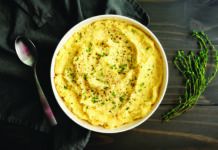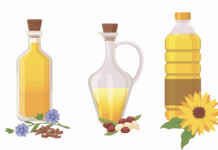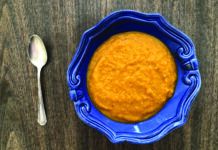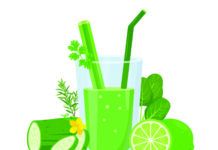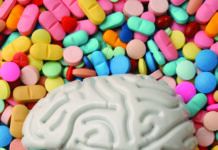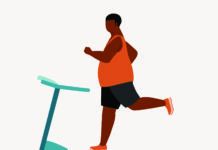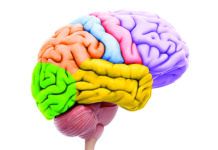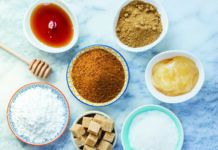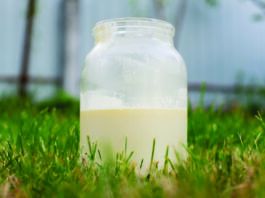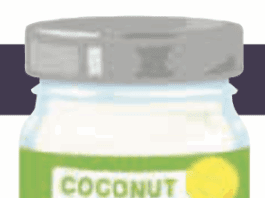Q. The dietary coach at my gym recommended that I go on the Paleo...
A.Susan B. Roberts, PhD, director of Tufts HNRCA Energy Metabolism Laboratory, replies, We do not recommend the Paleo diet. It has a very strange (non-scientific) view of what Paleolithic man ate, and does not provide a balanced, healthy diet. For somebody who is not overweight, the USDAs MyPlate is good general dietary advice.…
Q. You recently wrote that certain fibers can bind essential minerals and lessen their...
A.Robert M. Russell, MD, emeritus professor at Tufts Friedman School, answers: It is known that many foods that are high in fiber (particularly cereals) can inhibit the absorption of iron and zinc from the gastrointestinal tract. However, cereals that are high in fiber are also high in a substance known as phytate, which also has an inhibitory effect on these minerals absorption. So it is hard to pick apart how much of the inhibition of…
Q. Raisins are my favorite snack. Is this a good choice? If grapes are...
A.Diane L. McKay, PhD, an assistant professor in Tufts Friedman School and a scientist in its HNRCA Antioxidants Laboratory, notes that a supplement in the June 2013 issue of the Journal of Food Science was all about raisins. While this was sponsored by the California Raisin Board, it nonetheless presented some valuable studies. Basically, she says, the findings were: …
Q. I am unable to eat chocolate or drink coffee or tea with caffeine,...
ADiane McKay, PhD, a scientist in Tufts HNRCA Antioxidant Nutrition Laboratory, answers: Since carob and chicory are plant-based, they both contribute to our daily intake of phytochemicals. Chicory (Cichorium intybus) is one of the richest dietary sources of caffeic acid (not to be confused with caffeine), while carob (Ceratonia siliqua) is high in tannins, as well as the minerals calcium and potassium. …
Q. Does the magnesium content of frozen spinach differ from that of fresh?
A. Adela Hruby, PhD, MS, MPH, who recently completed an American Heart Association Predoctoral Fellowship at Tufts Friedman School, responds: According to the USDA Nutrient Database, per gram, both raw spinach and frozen spinach (unprepared or prepared by boiling and draining), contain around the same amount of magnesium (about 75-82 milligrams per 100 grams of spinach). However, if you go by a typical serving of one cup, rather than by weight, then frozen spinach, because its…
Q. How are multivitamins made and how do the vitamins get into the body...
A. Brittany Loriquet, a dietetic intern in Tufts Frances Stern Nutrition Center, explains: Vitamins can be derived from food products or produced synthetically in a lab. Most multivitamins are made from synthetic vitamins, which are cheaper and easier to use than those from natural foods. There is no difference in the chemical structure between the synthetic form and naturally derived forms. To make a multivitamin, the vitamins and minerals are ground into a fine powder. …
Q. Is brown spaghetti higher in vitamins and other nutrients than regular white spaghetti,...
A. Lisa Massini, a dietetic intern at Tufts Frances Stern Nutrition Center, answers: Whole-grain pasta is naturally darker than white refined pasta due to the bran (the hard, fibrous outer layer of a grain) that it contains. This color difference is not due to added colors. Whole-grain pasta contains a significantly larger amount of fiber than white pasta (6 grams per serving versus 2 grams serving). It is also richer in iron and magnesium; however,…
Q. Ive read numerous articles about the benefits of drinking coffee; however, none of...
A. Jeffrey B. Blumberg, PhD, director of Tufts HNRCA Antioxidants Research Laboratory, replies: Casein, the protein in cows milk, does bind to chlorogenic acids, the principal bioactive constituents of coffee (other than caffeine). Depending on the amount of milk added to the coffee, this may decrease the absorption of chlorogenic acids into the body, although its ultimate impact on antioxidant activity or other actions is not clear. There do not appear to be any human…
Q. I enjoyed your Special Report on food-drug and supplement-drug interactions (May), which states...
A. Our source for this information was the National Library of Medicines MedlinePlus, which explains: Warfarin (Coumadin) is used to slow blood clotting. There are several reports showing that taking glucosamine hydrochloride with or without chondroitin increases the effect of warfarin (Coumadin) on blood clotting. This can cause bruising and bleeding that can be serious. Dont take glucosamine hydrochloride if you are taking warfarin (Coumadin).…
Q. Do you have any information regarding the prickly pear cactus and claims that...
A. Erika Hval, a dietetic intern at Tufts Frances Stern Nutrition Center, answers: The prickly pear cactus, sometimes referred to as the cactus pear (Optunia spp.), has been touted for a variety of health-related benefits from treating diabetes to alleviating alcohol-induced hangover symptoms. Found in Mediterranean and subtropical African and American zones, cactus pear plants are characterized by flattened stems (cladodes) and brightly colored, sweet-tasting fruits. In general, the stems supply high amounts of pectin…

